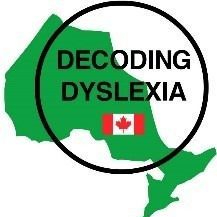By Lark Barker, special education teacher, structured literacy specialist and DDOn President
The purpose of the Right to Read inquiry is NOT to investigate and determine what are ‘best practices’ to teach reading. That has already been ascertained by science and data. One purpose of the OHRC inquiry is to determine whether Ontario School boards are utilizing these proven instructional methods in classroom instruction.

Four educational myths
My belief is that as educators, it is imperative that we scrutinize the educational myths that permeate (and distort) our understanding of how students learn to read, and thus, take us down the ‘wrong’ path when we are deciding how to fix our ‘reading problem’. I will address four myths that have to do with how students learn to read, using ‘learning styles’ to dictate instruction and the role of Universal Design of Learning (UDL) and Culturally Relevant and Responsive Pedagogy (CRRP) in supporting struggling readers:
The first myth that we need to get rid of is that reading comes naturally, much like speaking. In her podcasts journalist Emily Hanford discusses how current reading curriculums were based on this extrapolation of Noam Chomsky’s work, and how the leading founder of the ‘whole language approach’, Ken Goodman, based his pedagogy on observation, not any data or science. This myth undermines our understanding of the complex nature of learning to read. As Dr. Louisa Moats states, “Learning to read is a complex achievement, and learning to teach reading requires extensive knowledge and skills across the components of word recognition, language comprehension, spelling, and writing.” (Moats, 10)
The second myth educators need to critique is that of ‘learning styles’ and their
importance in how students learn. The idea that all students learn to read differently is
incorrect and creates a tainted lens through which we develop curriculum and implement
pedagogy and best practices. As Nadine Gaab, Associate Professor at Harvard states
on her website, “Learning styles”* are probably the biggest myth in education. If you
encounter this myth for any learner please make sure to debunk this myth by pointing to
[these] scientific articles and resources:
- Maybe They’re Born With It or Maybe It’s Experience: Towards A Deeper Understanding of the Learning Style Myth, American Psychological Association, Nov. 2, 2020 (https://www.apa.org/pubs/journals/releases/edu-edu0000366.pdf)
- Belief in Learning Styles Myth may be Detrimental, American Psychological Association, May 30, 2019 (https://www.apa.org/news/press/releases/2019/05/learning-styles-myth)
(* However, It is important to understand that the lack of evidence for preferred learning styles does not mean that we shouldn’t give learners various ways of acquiring information and knowledge OR try to maximize engagement and motivation. This will actually enhance their learning”. Taken from https://www.gaablab.com/dyslexia-myths)
What we know through FMRI scans is that all students learn to read using the same parts of the brain. Thus, we all learn to read the same way. The real questions we should be asking is ‘Why do some students struggle to learn to read more than others?’ and ‘What can we do about it?’
The third myth that may impact decisions we make around teaching reading pertains
to Universal Design for Learning (UDL) and Culturally Responsive and Relevant
Pedagogy (CRRP). While UDL allows accessible and engaging access to relevant
content, and CRRP can increase student engagement and comprehension in texts,
neither explicitly teach reading skills to fill in gaps that struggling readers have. Providing
readers with more culturally relevant text is important for many reasons, but it will not
make them better readers if they cannot decode the words they are trying to read.
- Culturally Responsive Teaching and The Brain: Promoting Authentic Engagement and Rigor Among Culturally and Linguistically Diverse Students by Zaretta Hammond, 2015 (https://www.amazon.ca/Culturally-Responsive-Teaching-Brain-Linguistically/dp/1483308014)
- Culturally Responsive Teaching: 4 Misconceptions, article by Jennifer Gonzalez
The fourth myth is the mistaken understanding that structured literacy can’t be implemented in the regular classroom. In fact, not only is it essential for students with dyslexia, it is beneficial to all students.
- Structured literacy in Action’ (International Dyslexia Branch Ontario) https://www.idaontario.com/structured-literacy-in-action/
Top 3 resources
#1. Podcasts by Emily Hanford
Synopsis: These podcasts discuss how we came to use the curriculums we have, and
what is wrong with them.
- Hard Words: Why aren’t kids being taught to read? (2018) (https://www.apmreports.org/episode/2018/09/10/hard-words-why-american-kids-arent-being-taught-to-read)
- At A Loss for Words: what’s wrong with how schools teach reading? (2019) (https://www.apmreports.org/episode/2019/08/22/whats-wrong-how-schools-teach-reading)
Related Content:
- Is My Kid Learning to Read- Part 1? (https://www.youtube.com/watch?v=Lxx7hs0qdKQ)
- Is My Kid Learning to Read- Part 2? (https://www.youtube.com/watch?v=h2pRi_B_Oj8)
#2. Article by Dr. Louisa Spear-Swerling
Synopsis: This article looks at Typical Literacy Practices (TLP) and compares them to
Structured Literacy Practices (SLP). Dr. Spear-Swerling points out the key features of the
SLP, why they are important, and how this contrasts to TLP including the 3 cueing system.
#3. Article by Dr. Louisa Moats
Synopsis: If you could only read one document from this listing it should be this one.
Dr. Moats outlines what is wrong with how we are currently teaching, how/what we
should train teachers and how to get there. She also has a fabulous listing of resources
one could review if they wanted to learn more about the SOR.
- Teaching Reading is Rocket Science 2020: What expert teachers of reading should know and be able to do (https://www.readingrockets.org/sites/default/files/teaching-reading-is-rocket-science-2020.pdf)
If, after reading these materials you really wanted to delve into the issue of teaching reading, I would suggest the following books:
- Dr. Mark Seidenberg. Language at the Speed of Sight: How We Read, Why So Many Can’t
and What Can Be Done About It. 2017 - Dr. Stanislas Dehaene. Reading in the Brain: The New Science of How we Read. 2020
- Dr. Maryanne Wolf. Proust and the Squid. 2008
For dyslexia specific materials I would recommend Overcoming Dyslexia by Dr. Sally Shaywitz
& Dr. Jonathan Shaywitz.

